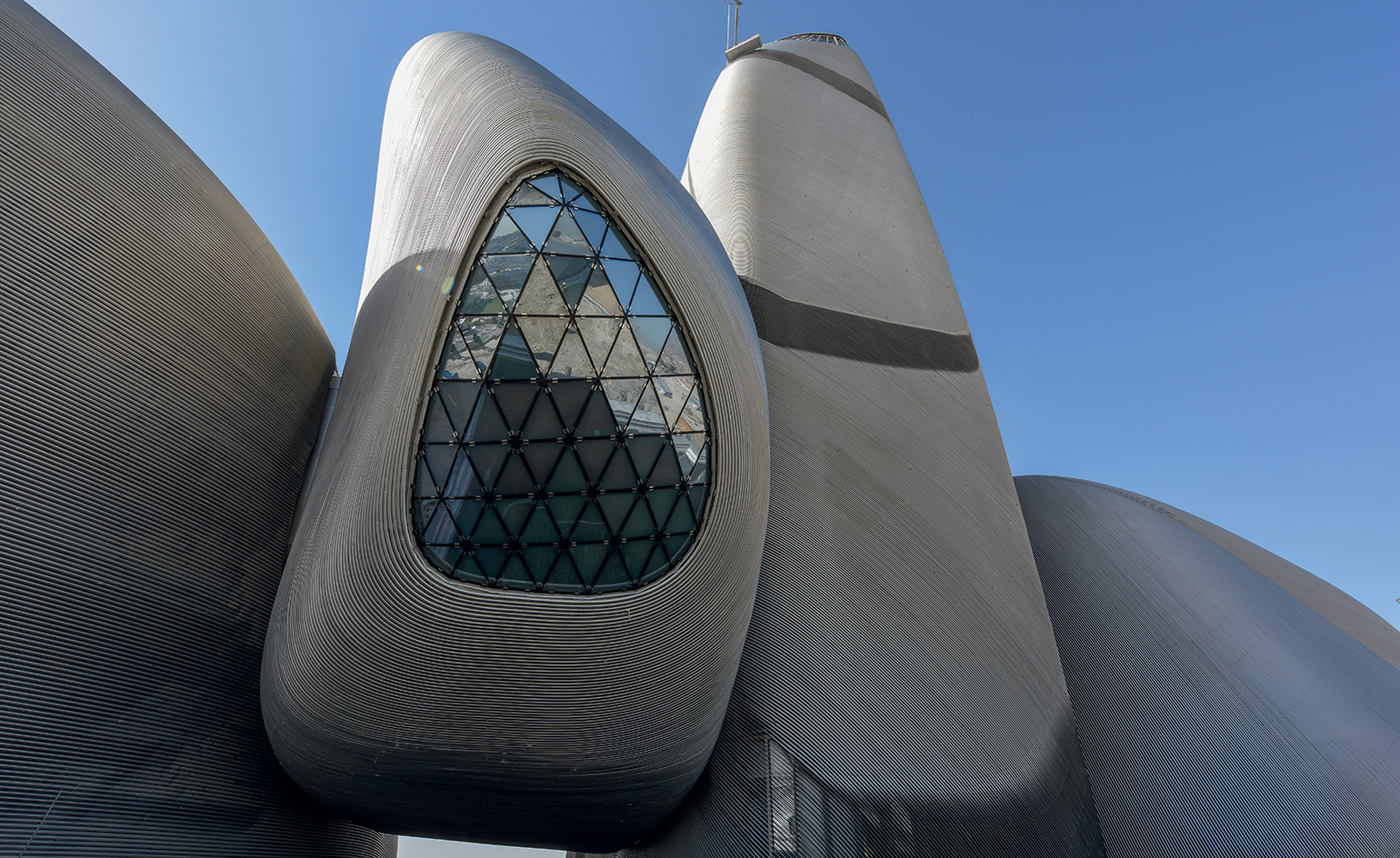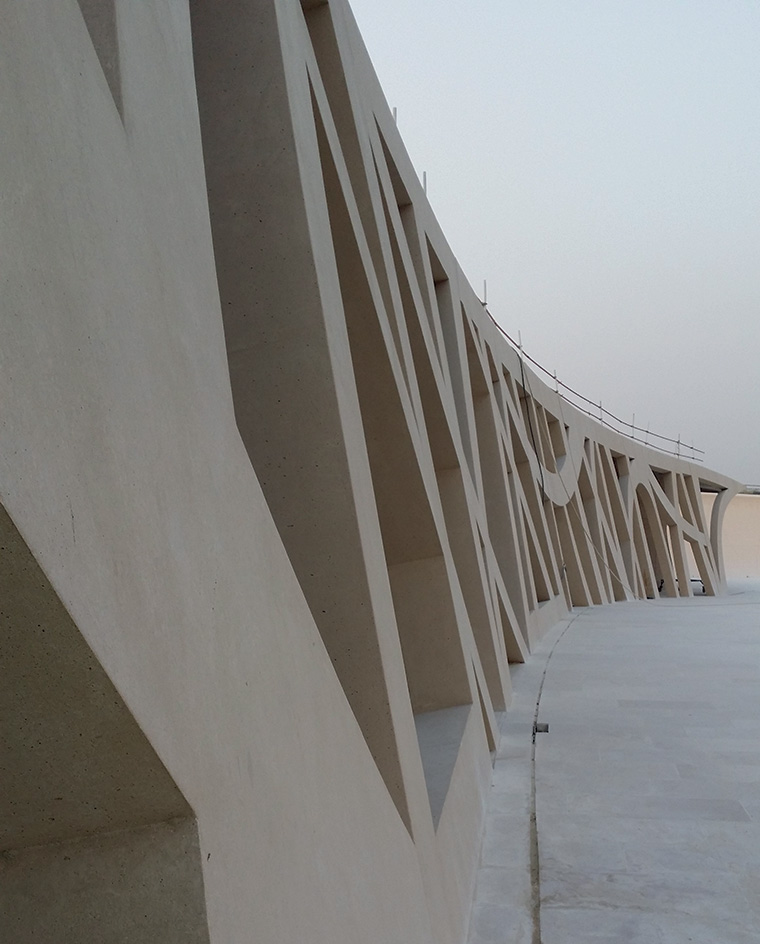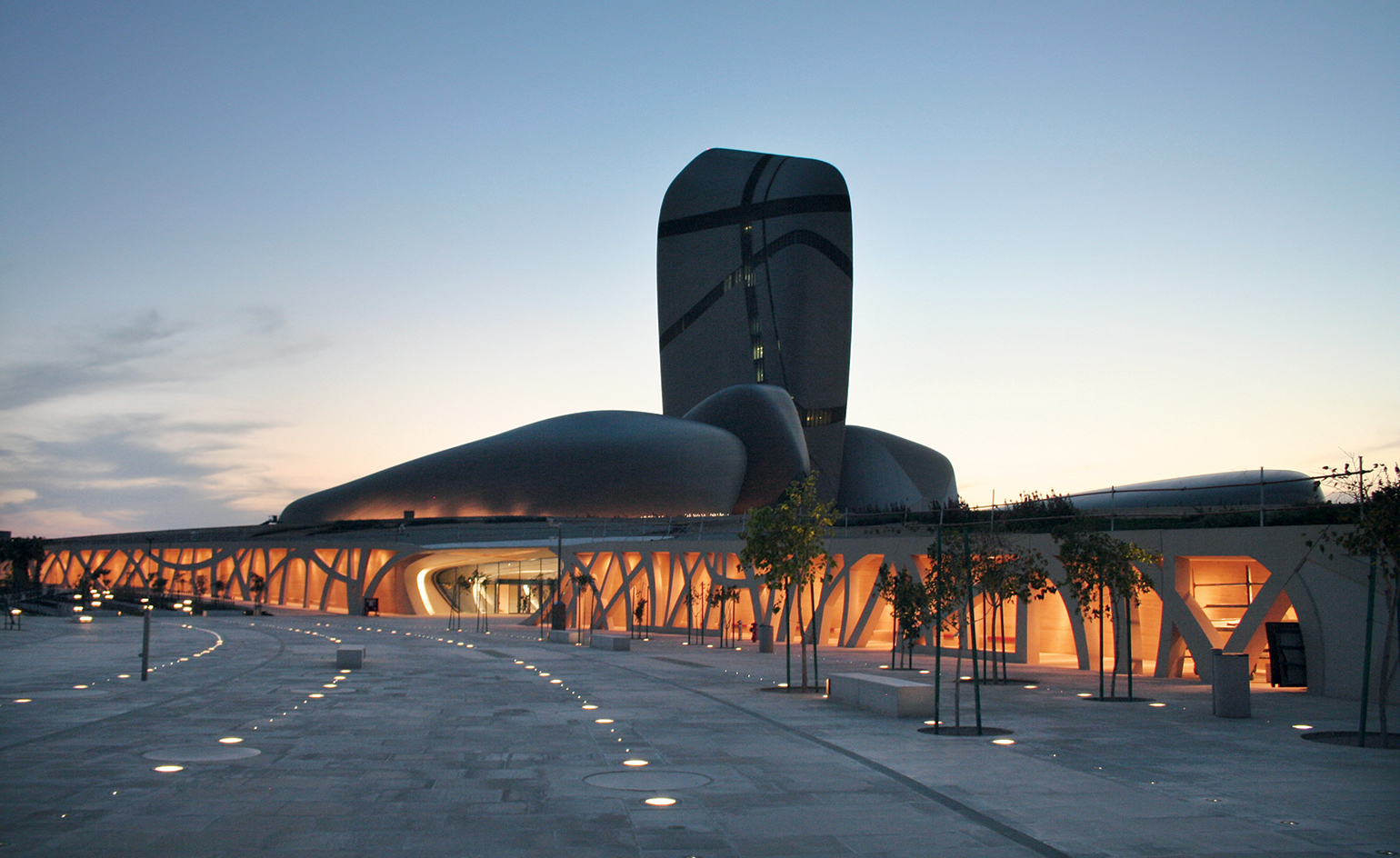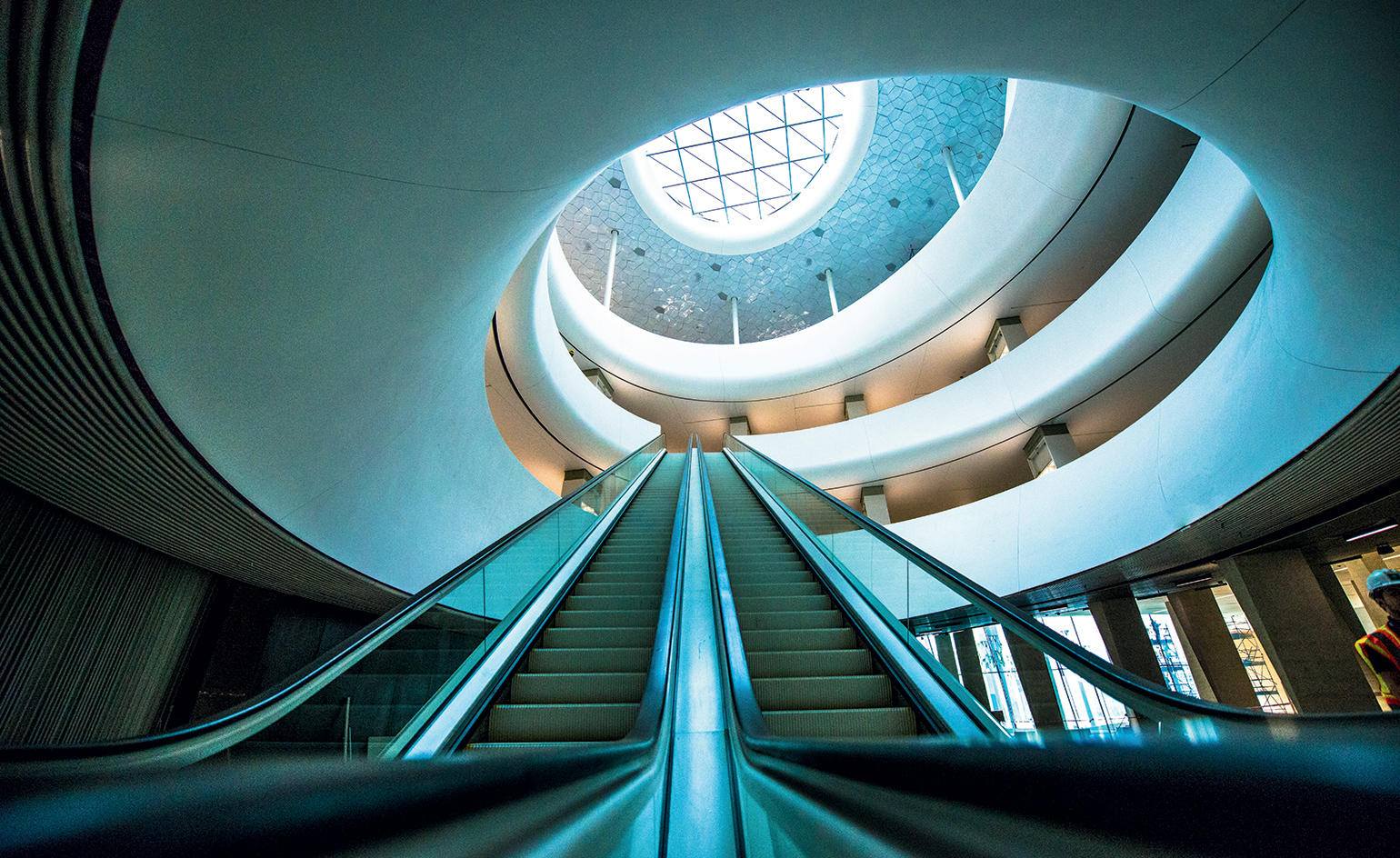Desert form: Snøhetta's monumental symbol of Saudia's past, present, and future

Rising up from the eastern deserts of Saudi Arabia like an ancient rock formation, the King Abdulaziz Center for World Culture is an ambitious piece of place-making. Nearly a decade in creation, this vast complex has been designed by Norwegian firm Snøhetta to serve as a crossroads for many cultures, a geological form rendered in concrete and stainless steel.
Won in competition back in 2007, the building has been on site since 2008, during which time the brief has evolved and expanded. ‘When it’s finished in the spring, there will be an auditorium and theatre space for around 500, as well as a great hall, education centre, cinema and library,’ says Snøhetta’s Tae Young Yoon, the architect overseeing the project. The client is the country’s national oil firm, Saudi Aramco, believed to be the world’s most valuable company. Aramco’s headquarters in Dhahran, in the Eastern Province, is where Saudi Arabia’s massive petrochemical industry began back in the 1930s. Today, the city is a mixed landscape of nondescript glass towers, industrial parks, quasi-vernacular structures and huge residential complexes, surrounded by unrelenting desert to the west.

Geometric forms shape the interface between building and landscape
The Center for World Culture is the new focal point for a long-running programme of cultural relations and exchanges, a sort of gateway between the traditional culture of Saudi Arabia itself and the more globalised culture of the Dhahran compounds. ‘The wonderful thing about this project is that the client has stayed ambitious all this time,’ says Yoon, and the (nearly) finished building is testament to a steely resolve to create a good, old-fashioned architectural icon, albeit one that is rich with symbolism and history.
The centre is broken up into five ‘pebbles’, smooth, shiny objects that glisten in the sun and appear mysterious and monumental on the horizon. A 98m tower is the dominant heart of the composition, with a smaller ‘keystone’ to one side and three lower, sleeker structures rising up out of the desert. ‘The tower is an educational building. Each floor has a different function,’ says Yoon. ‘The keystone is intended to be the heart of the learning experience, a maker space with studios and equipment. In architecture, the keystone is the element that holds theweight of the arch. Here, it’s a keystone for learning.’ A large oval window, an ‘eye to the future’, looks down on the central plaza.
The five pebbles are arranged around this open space, which symbolises the coming together of past, present and future. Aramco chose the location for its close proximity to Dhahran’s ‘Prosperity Well’, the original site of oil export production that set the kingdom on the path to regional dominance. That past is honoured in basement displays and a small museum; the shape of the tower, with its criss-crossing bands of glazing, evokes the sight of an oil derrick rising up above the desert, which is itself symbolised by the smooth surfaces of the pebbles.

The centre is formed from five structural elements, known as 'pebbles', and is dominated by the 98m 'Knowledge Tower'

The library is illuminated by a 'pulse of light' that reaches down into the space
INFORMATION
For more information, visit the Snohetta website and the King Abdulaziz Center for World Cuture website
Wallpaper* Newsletter
Receive our daily digest of inspiration, escapism and design stories from around the world direct to your inbox.
Jonathan Bell has written for Wallpaper* magazine since 1999, covering everything from architecture and transport design to books, tech and graphic design. He is now the magazine’s Transport and Technology Editor. Jonathan has written and edited 15 books, including Concept Car Design, 21st Century House, and The New Modern House. He is also the host of Wallpaper’s first podcast.
-
 All-In is the Paris-based label making full-force fashion for main character dressing
All-In is the Paris-based label making full-force fashion for main character dressingPart of our monthly Uprising series, Wallpaper* meets Benjamin Barron and Bror August Vestbø of All-In, the LVMH Prize-nominated label which bases its collections on a riotous cast of characters – real and imagined
By Orla Brennan
-
 Maserati joins forces with Giorgetti for a turbo-charged relationship
Maserati joins forces with Giorgetti for a turbo-charged relationshipAnnouncing their marriage during Milan Design Week, the brands unveiled a collection, a car and a long term commitment
By Hugo Macdonald
-
 Through an innovative new training program, Poltrona Frau aims to safeguard Italian craft
Through an innovative new training program, Poltrona Frau aims to safeguard Italian craftThe heritage furniture manufacturer is training a new generation of leather artisans
By Cristina Kiran Piotti